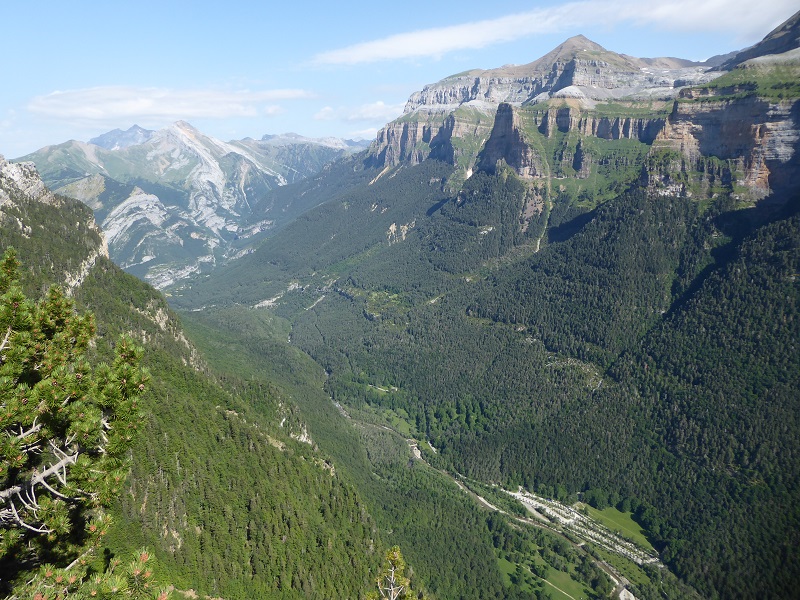
The Ordesa gorge is one of the great natural wonders of the Pyrenees, a sort of European version of the Grand Canyon but carved out by ice not water. It was designated as Spain’s first National Park a hundred years ago in August 1918 and since then has also been designated a World Heritage Site and biosphere reserve.
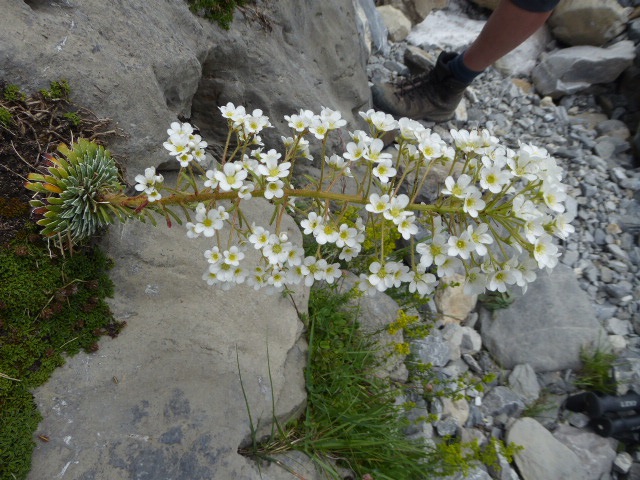
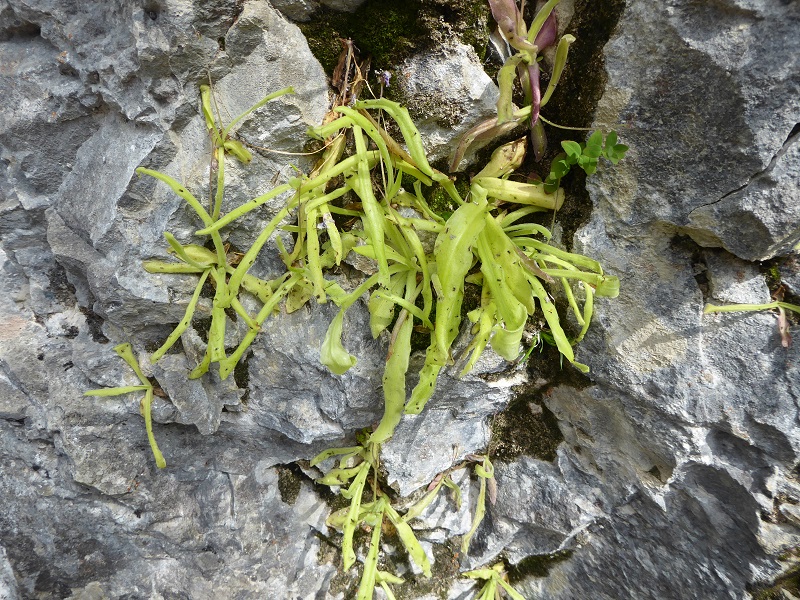
Its extremely popular and on the day we went dozens of people had made the 3-4 hour walk to the waterfalls at the Circo de Soasa at the eastern end of the gorge.
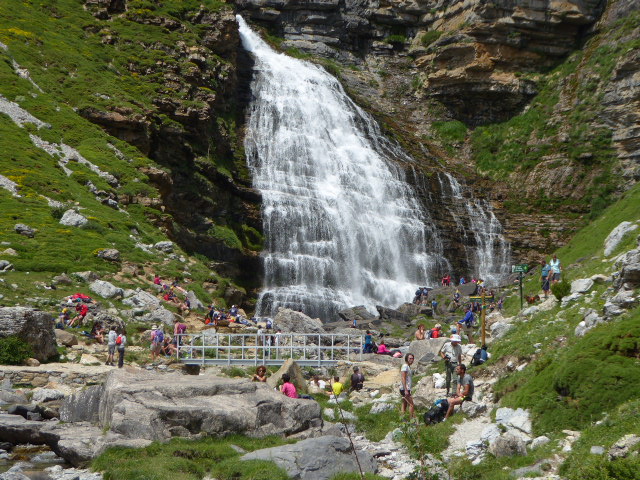
Historically, the National Park’s response to increasing tourist demand was to build a large car park near the entrance of the gorge:
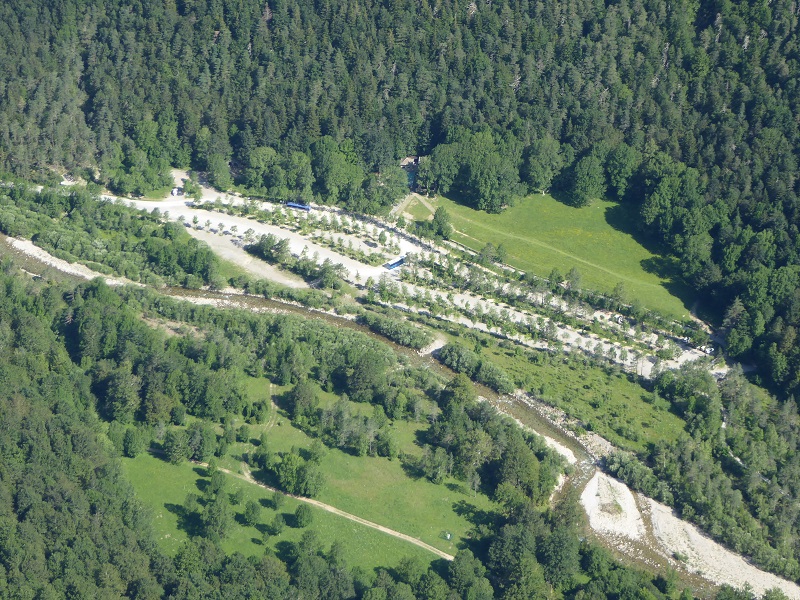
This enormous car park would not have sufficient to meet demand on the day we went. Rather than bungling on, as our National Parks tend to do, or extending the car park ever further, the response of the Ordesa and Mont Perdido National Park has been to close the car park at the times of highest demand (Easter, July till September and mid-October). Instead they run a shuttle bus up the gorge from the town of Torla in the valley below (well before the end of the public road).
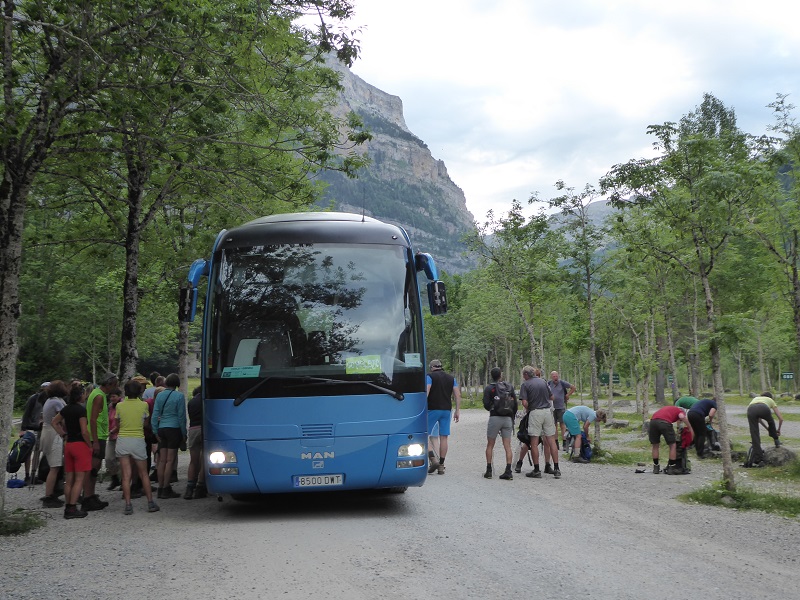
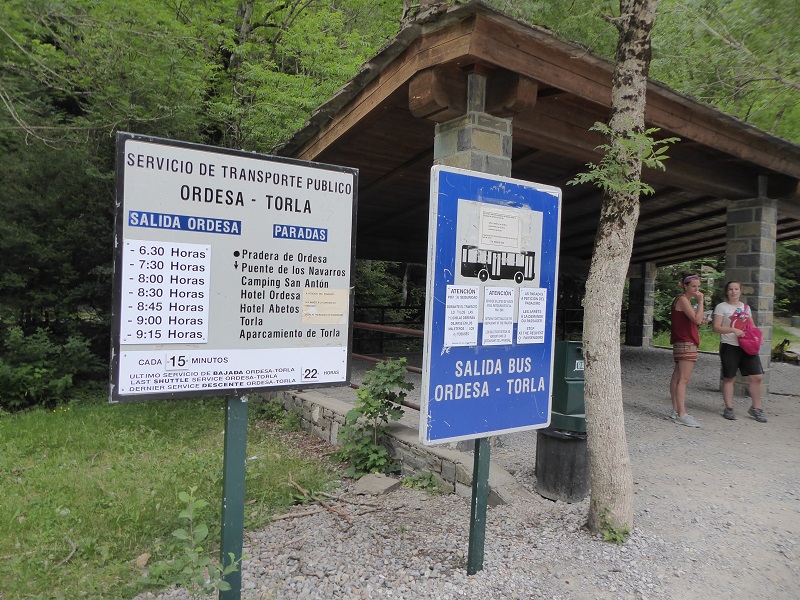 The buses run every fifteen minutes during the main part of the day, the last one back is at 10pm and a return ticket costs 4.5 euros. Effective and good value.
The buses run every fifteen minutes during the main part of the day, the last one back is at 10pm and a return ticket costs 4.5 euros. Effective and good value.
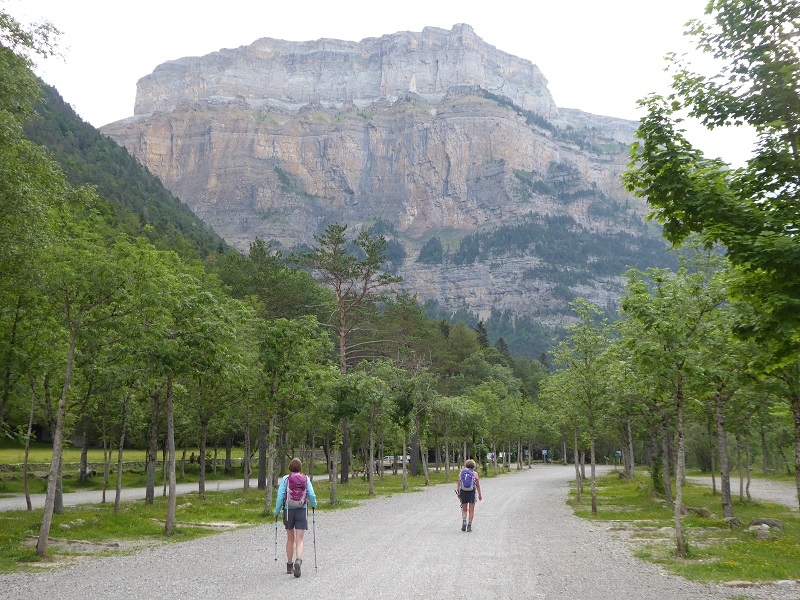
While still open outside the peak season, the former parking bays are now being reclaimed by nature. There are opportunities to plant more trees and narrow the road further which would help reduce the visual impact from above and increase the “natural” feel of the place.
The case for seasonal road closures
I have previously blogged about how our two National Parks should learn from what is happening abroad and close some roads to private motor vehicles for part of the year (see here) . The Loch Lomond and Trossachs National Park Authority have done nothing and the predictable consequence has been yet more traffic chaos at Balmaha and Rowardennan this year. Using the Ordesa example, what they should be developing is a shuttle bus service between Drymen and Rowardennan in the summer months. The Cairngorms National Park Authority have at least identified the need for improved public transport in Glen More to manage the parking pressures there:
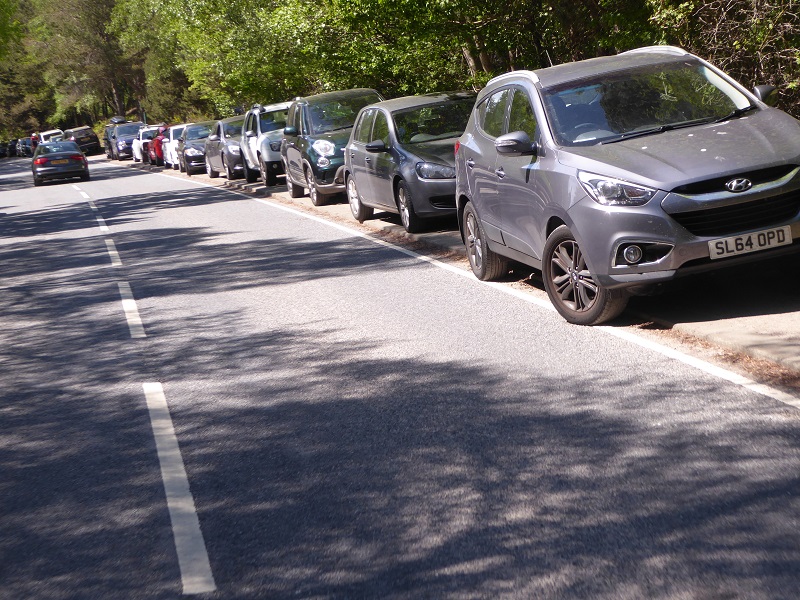
However, the CNPA’s ability to act is continually hampered by HIE and Natural Retreats’ failure to work for the wider public good or implement the actions agreed under the Glenmore and Cairngorm Strategy. The introduction of car parking charges at Cairngorm (see here) without any commitment to invest the money raised in improving public transport in the glen epitomises this.
The evidence from National Parks in Europe is that seasonal road closures, if accompanied by the introduction of a shuttle bus service, work:
- They improve the quality of the “visitor experience”. Instead of a car dominated environment, which results in noise, fumes and the hassles of finding a space to park, you step out of the bus into nature.
- They attract rather than deter people. this is both because the quality of the visitor experience is enhanced – it makes you feel you are going somewhere special – but also because it opens up access to those without cars. Think of Rowardennan and Ben Lomond which is basically inaccessible to the 50% or so of people living in the Glasgow conurbation who have no access to a car.
- They solve the problem of increasing demand leading to the need to create ever more and large car parks (which do nothing to meet National Park objectives).
Then there are the wider benefits:
- The creation of jobs locally. To operate the buses at Ordesa there must have been at least a dozen driving jobs as well as ticket sellers, cleaners etc
- The reduction in carbon emissions that results from substitution of private cars by public transport.
In my view the case is unanswerable. Why then are our two National Parks so reluctant to learn from good practice in National Parks in other countries?
Not just Europe. This system is used in the USA as well. I first came across it in the 1990s in the Maroon Bells in Colorado. https://www.fs.usda.gov/detail/whiteriver/specialplaces/?cid=stelprd3835792. It really is an excellent system and our national parks ought to implement it. They have plenty of examples to learn from!
I wonder if this kind of system could be tried on Skye? Why construct a vast car park near the Fairy Pools when you could shuttle folk there from a less sensitive place?
Absolutely! And not difficult to do……….there is already parking at Talisker distillery and if to start with such a scheme only operated in school holidays, school buses could be used to provide a shuttle service – so there would be NO need for capital investment up front. I would like to see such a shuttle service going to the end of Glen Brittle with access by cars limited to locals, those who had booked places to stay in Glen Brittle or those arriving before say 7.30am. Were our National Parks, with their significant resources, to have set up such schemes it would be much easier for places like Skye to follow
There you have it in a nutshell. Has anyone on the Isle of Skye even mentioned this option?